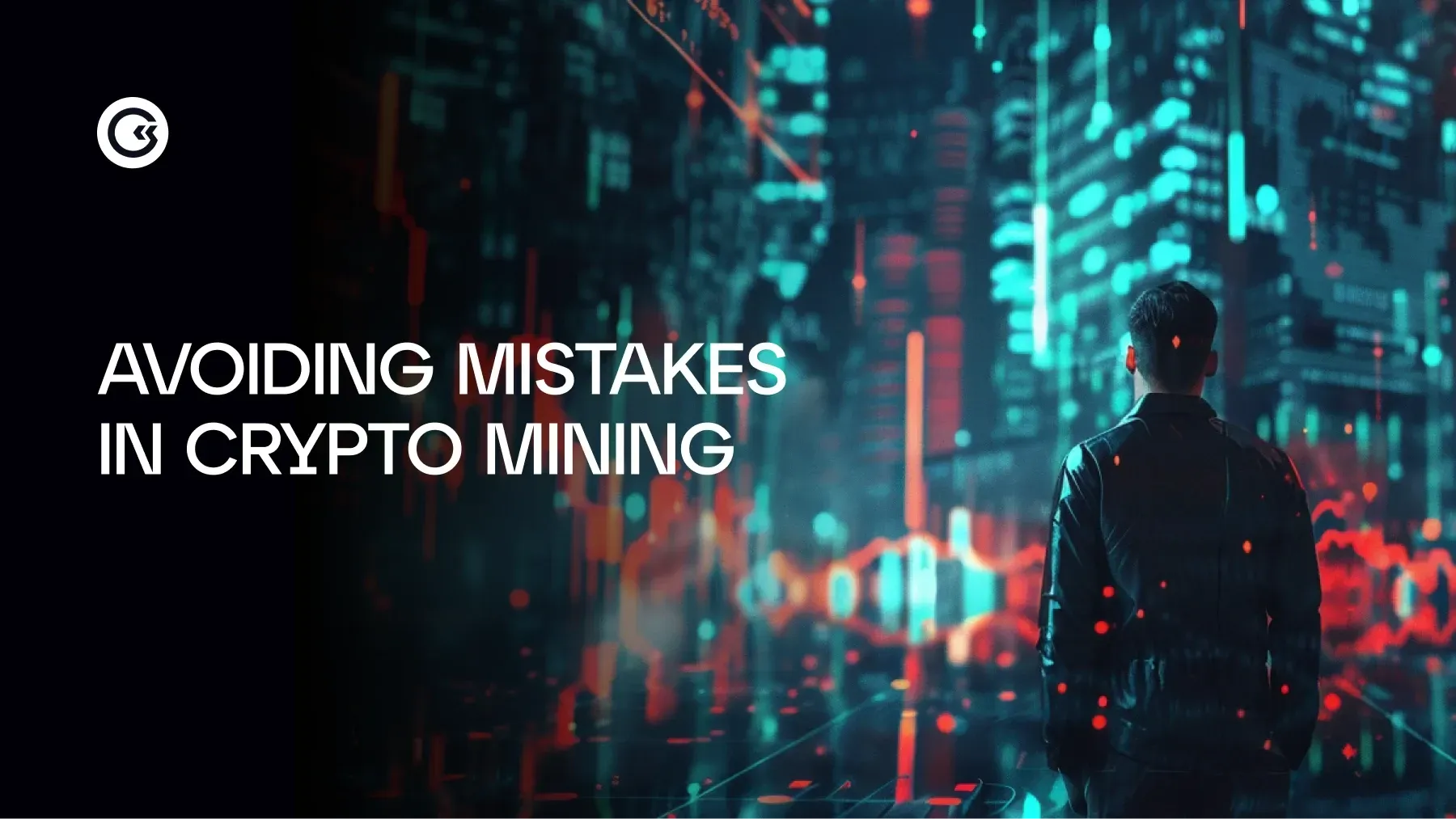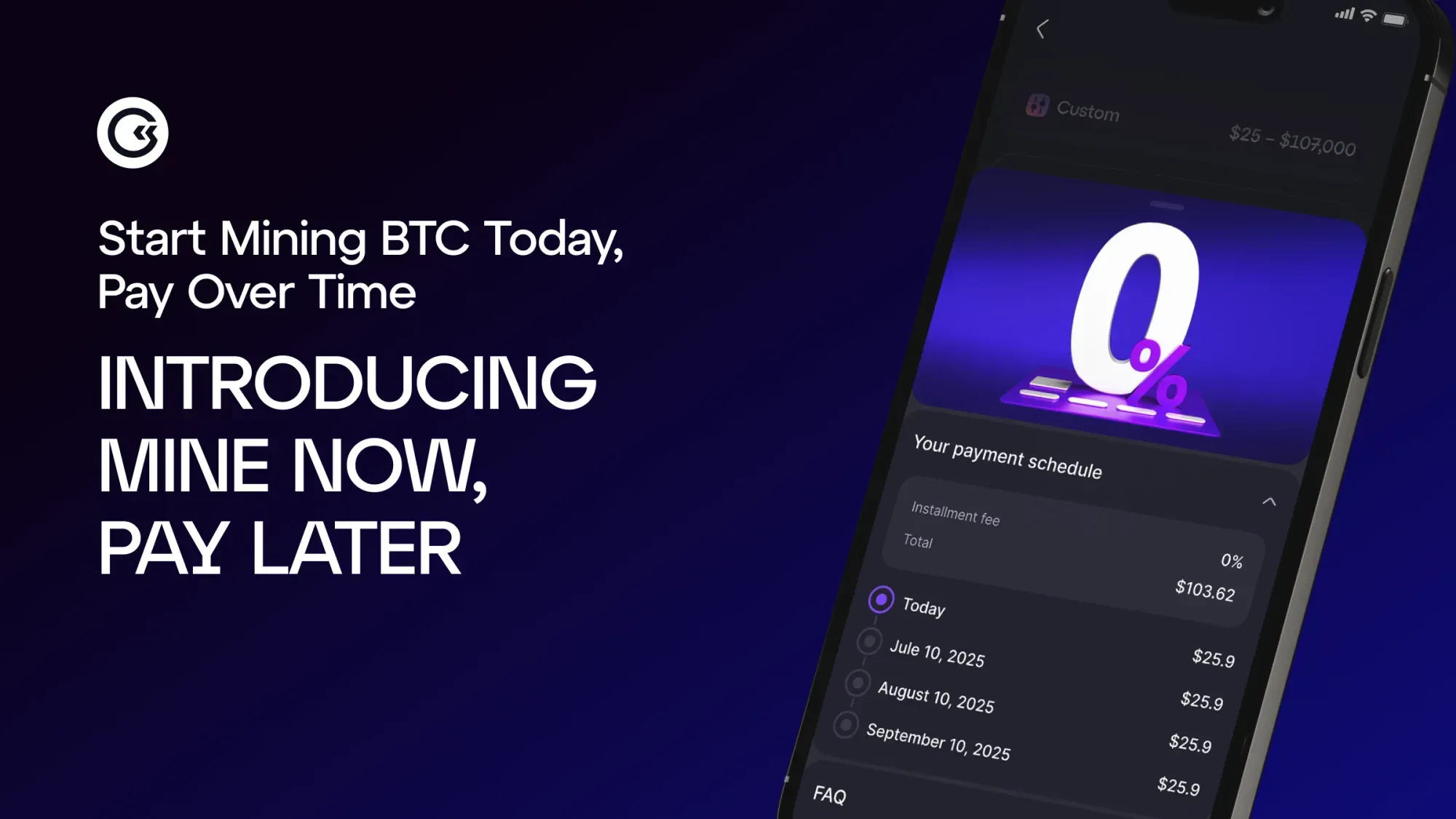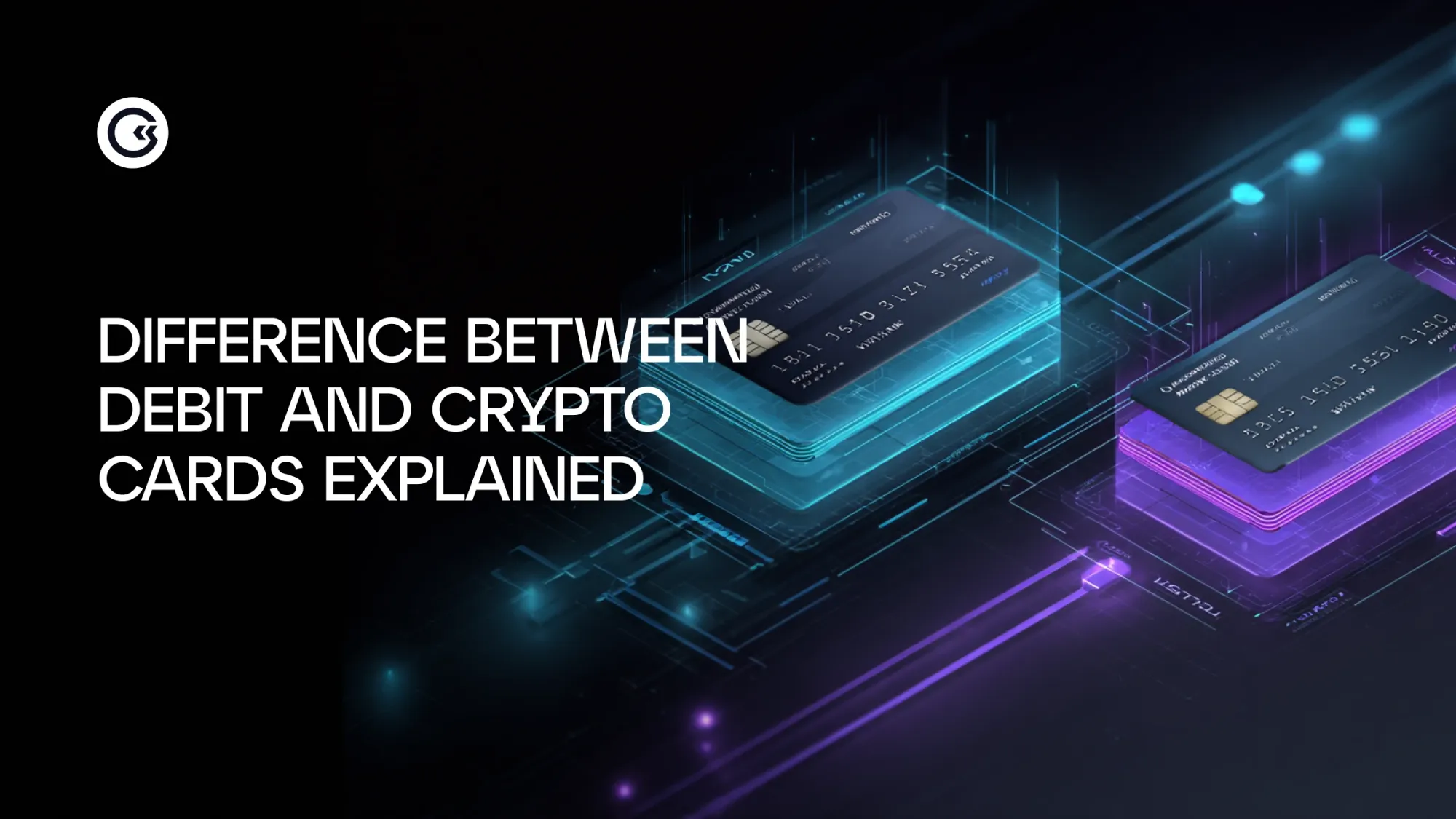Krypto-Mining mag ein Unterfangen voller Potenzial sein, aber wie stehen die Chancen, dass es tatsächlich funktioniert und Gewinn abwirft? Es gibt mehr als nur ein paar Mining-Geschichten mit einem unglücklichen Ende, und so viele von ihnen haben etwas gemeinsam: Fehler. Während niemand alles vorhersagen kann, gibt es bestimmte Dinge, die vermieden werden sollten, um erfolgreich zu sein. In diesem Artikel werden wir tiefer in das Wesen des Minings und die Probleme eintauchen, denen Miner begegnen können.
Kryptowährungs-Mining verstehen

Was ist Kryptowährungs-Mining?
Kryptowährungs-Mining ist der Prozess, bei dem neue Münzen geprägt und Transaktionen auf einer Proof-of-Work-Blockchain validiert werden. Miner verwenden Hardware, typischerweise CPUs, GPUs, FPGAs oder spezialisierte ASIC-Miner, um bei der Lösung kryptographischer Datenrätsel zu konkurrieren. Wenn ein Miner einen Block löst, bündelt er Transaktionen in einen neuen Block, sichert das Netzwerk und erhält Münzbelohnungen. Mining spielt eine kritische Rolle bei der Sicherung der Blockchain, der Verhinderung von Doppelausgaben und der Aufrechterhaltung der Dezentralisierung des Ledgers. Der Miner fügt einen Block zur Kette hinzu, verifiziert Transaktionen und erhält den Konsens aufrecht.
Bedeutung der Fehlervermeidung beim Mining
Selbst scheinbar kleine Fehler können schnell alle Gewinne auffressen. Eine falsche Ausrüstungswahl, Ineffizienzen im Energiemanagement oder Sicherheitslücken können das, was wie ein vielversprechendes Unternehmen aussieht, in ein unrentables verwandeln. Von verschwendeter Energie über überhitzende Rigs bis hin zu Phishing-Verlusten – Fehler häufen sich schnell an. Benutzer müssen wissen, was zu vermeiden ist, um Tausende von Euro zu sparen.
Häufige Fehler beim Kryptowährungs-Mining

Die falsche Hardware wählen
Die Auswahl ineffizienter oder veralteter Hardware ist einer der häufigsten Fehler, die neue Miner machen. Viele Anfänger fallen auf alte oder wenig effiziente Rigs herein, die mehr Strom pro Hash verbrauchen, als sie an Erträgen generieren. ASIC-Miner sind speziell gebaut, um einen Algorithmus (z.B. SHA-256 für Bitcoin) mit hohen Hash-Raten und niedrigem Energieverbrauch pro Terahash zu berechnen, während GPUs und CPUs vielseitiger, aber weit weniger effizient in Bitcoin-ähnlichen Netzwerken sind.
- CPUs bieten jetzt vernachlässigbare Hash-Raten; Bitcoin-Mining mit einer CPU ist im Wesentlichen unrentabel. GPU-Mining funktioniert noch für einige Altcoins wie Ethereum Classic, erfordert aber sorgfältige Bewertung.
- GPUs bieten Flexibilität und werden für Münzen verwendet, die auf Ethash, Scrypt oder ähnlichen basieren, verbrauchen aber mehr Energie pro Hash als ASICs.
- ASICs sind der Goldstandard in der Mining-Effizienz für ihren vorgesehenen Algorithmus. Die Wahl eines ASIC mit hoher Hash-Power und niedrigen Joule pro Terahash (vorzugsweise < 21 J/T) ist wesentlich, um 2025 wettbewerbsfähig zu bleiben.
Die Unterschiede zwischen CPU-, GPU-, FPGA- und ASIC-Miner-Technologien bei der Ausrüstungsauswahl zu ignorieren, kann zu schlechtem ROI oder veralteten Setups führen.
Stromkosten ignorieren
Stromkosten sind die energiehungrige Realität von Mining-Operationen. Viele Miner unterschätzen, wie Energiekosten die Einnahmen schmälern. Selbst Rigs mit hoher Hash-Rate können Geld verlieren, wenn die Energiekosten zu hoch sind.
Strategien zur Energieoptimierung:
- Berechnen Sie den Stromverbrauch Ihres Rigs und den lokalen Stromtarif mit Rentabilitätsrechnern.
- Wählen Sie Hardware mit starken Energieeffizienzverhältnissen (Hashes pro Watt).
- Verlagern Sie den Großteil des Minings auf Nebenzeiten, wenn Ihr Versorger dann niedrigere Tarife anbietet.
- Erwägen Sie erneuerbare Quellen wie Solar oder Wasserkraft, um Stromrechnungen zu reduzieren und die Nachhaltigkeit zu verbessern.
Mining ohne ordnungsgemäße Kühlung
Mining-Rigs erzeugen eine enorme Menge Wärme. Ohne effektive Kühlung und Belüftung verschlechtern sich die Leistungen, die Hardware altert schneller, und die Gesamtbetriebszeit sinkt. Überhitzte Rigs können drosseln oder sogar dauerhaft ausfallen.
Empfohlene Kühlungslösungen:
- Gut belüftete Einrichtungen oder Heimräume mit konstantem Luftstrom.
- Hochgeschwindigkeitsventilatoren, Kühlkörper oder Luftkühlungssetups.
- Für größere oder hochdichte Rigs: Immersionskühlung-Systeme, die Komponenten in nicht-leitende Flüssigkeit tauchen – dies verbessert Effizienz, Lebensdauer und sogar Hash-Rate, während Lüftergeräusche eliminiert werden.
Ihr Mining-Rig nicht überwachen
Mining-Software und -Hardware unbeaufsichtigt laufen zu lassen ist riskant. Sie könnten Überhitzung, Abstürze, nachlassende Leistung oder Hash-Rate-Verluste verpassen, bis es zu spät ist. Viele neue Miner vernachlässigen regelmäßige Aufsicht.
Werkzeuge und Software:
- Überwachungsplattformen wie Hive OS, CGMiner oder benutzerdefinierte Dashboards, die Temperatur, Hash-Rate, Lüftergeschwindigkeit und Betriebszeit verfolgen.
- Stellen Sie Warnungen oder automatische Abschaltungen ein, wenn Temperaturen sichere Schwellenwerte überschreiten.
- Führen Sie regelmäßig Diagnosen durch, um Probleme früh zu identifizieren – dies bewahrt die Ausrüstungslebensdauer und konsistente Ausgabe.
Dem falschen Mining-Pool beitreten
Solo zu gehen kann Sie mit langen Durststrecken zwischen Blockbelohnungen zurücklassen. Dem falschen Pool beizutreten – einem mit hohen Gebühren, geringer Zuverlässigkeit oder inkonsistenten Auszahlungen – wirkt sich direkt auf Ihr Endergebnis aus.
Zu berücksichtigende Faktoren bei der Pool-Auswahl:
- Gebührenstruktur (Prozentsatz pro Block genommen).
- Pool-Größe und Konsistenz der Blockentdeckung.
- Auszahlungsschema (PPLNS, PPS, etc.).
- Zuverlässigkeit und Betriebszeit, Ruf in der Gemeinschaft.
Software nicht auf dem neuesten Stand halten
Die Verwendung veralteter Mining-Software ist sowohl ineffizient als auch unsicher. Ältere Versionen können Optimierungen vermissen, neue Algorithmusänderungen ignorieren oder Schwachstellen offenlegen.
- Regelmäßige Updates liefern Leistungsverbesserungen, neue Effizienzfunktionen (Leistungsbegrenzung, Unterspannung) und Sicherheitspatches.
- Laden Sie immer von vertrauenswürdigen Quellen herunter und verifizieren Sie die Integrität.
Wie Sie Ihren Mining-Betrieb optimieren

Den richtigen Mining-Algorithmus verwenden
Verschiedene Münzen verwenden verschiedene Mining-Algorithmen (z.B. SHA-256, Ethash, Scrypt, Equihash). Ihre Hardware muss zum Algorithmus passen. Zum Beispiel:
- Bitcoin → SHA-256 → ASICs.
- Ethereum Classic → Ethash → GPUs.
- Litecoin → Scrypt → ASICs/GPU je nach Modell.
Wählen Sie die effizienteste Kombination aus Algorithmus und Ausrüstung, um Belohnungen zu maximieren und verschwendete Energie zu minimieren.
Die beste Kryptowährung zum Mining wählen
Die Bewertung, welche Münze zu minen ist, erfordert die Analyse von:
- Aktueller Mining-Schwierigkeit und erwarteten Blockbelohnungen.
- Hardware-Kompatibilität.
- Erwarteter Rentabilität nach Abzug der Energiekosten.
- Marktliquidität und Netzwerk-Grundlagen der Münze.
Verwenden Sie Rentabilitätsrechner und verfolgen Sie Trenddaten, um zu identifizieren, welche Kryptowährungen die besten Renditen mit Ihrem spezifischen Hardware-Mix bieten.
Realistische Erwartungen setzen
Viele neue Miner überschätzen kurzfristige Gewinne und schaffen es nicht, ihre Erwartungen angemessen anzupassen. Mining ist nicht sofortiger Reichtum – es erfordert oft Monate, um die anfängliche Investition und Betriebskosten zu amortisieren.
- Verwenden Sie Break-Even-Rechner, um die Zeit zur Rückgewinnung Ihrer Investition zu schätzen.
- Berücksichtigen Sie den Stromverbrauch, Pool-Gebühren, Ausfallzeiten und variable Münzpreise.
- Nehmen Sie eine langfristige Denkweise an und verstehen Sie, dass Volatilität und Netzwerkereignisse (wie Halbierungen) die Renditen beeinflussen können.
Zu vermeidende Sicherheitsfehler

Ihre privaten Schlüssel nicht sichern
Ihre Krypto-Gewinne sind nur so sicher wie Ihre Wallet. Die Kontrolle über private Schlüssel zu verlieren oder sie unsicher zu lassen kann irreversible Verluste bedeuten.
Best Practices:
- Verwenden Sie Hardware-Wallets oder verschlüsselte Offline-Speicherung.
- Sichern Sie Seed-Phrasen sicher und lagern Sie sie offline.
- Lagern Sie niemals Schlüssel im Klartext auf Ihrem Heim-PC oder Mining-Rig.
Auf Phishing-Betrug hereinfallen
Phishing bleibt eine ernste Bedrohung. Betrug kann auf Mining-Software, Wallets oder Phishing-Pool-Dashboards abzielen.
- Hüten Sie sich vor gefälschten Downloads und falschen Websites.
- Inspizieren Sie URLs sorgfältig, verwenden Sie Lesezeichen und aktivieren Sie Browser-Anti-Phishing-Tools.
- Behandeln Sie unaufgeforderte Links oder E-Mails mit extremer Skepsis.
Keine Zwei-Faktor-Authentifizierung (2FA) verwenden
2FA zu aktivieren fügt kritische Sicherheit zu Ihren Mining-Konten, Pool-Dashboards und Wallets hinzu. Ohne sie kann ein kompromittiertes Passwort zu vollständigem Asset-Diebstahl führen.
- Verwenden Sie Authentifikator-Apps (Google Authenticator, Authy) und vermeiden Sie SMS wo möglich.
- Aktivieren Sie 2FA für alle Dienste, sogar "unwichtige".
Wie Sie Ihre Mining-Performance überwachen und verfolgen

Mining-Software-Tools verwenden
Ihre Software sollte mehr als nur Hashes ausführen – sie muss überwachen, anpassen und schützen. Tools wie Hive OS, GMiner, CGMiner oder proprietäre ASIC-Dashboards ermöglichen es Ihnen:
- Hash-Rate, Temperatur und Energieverbrauch zu verfolgen.
- Unterspannung oder Übertaktung sicher zu konfigurieren.
- Neustarts zu automatisieren, wenn ein Rig einfriert.
Regelmäßig auf Hardware-Probleme prüfen
Inspektionsroutinen sollten beinhalten:
- Visuelle und Software-Checks auf Staub, Korrosion und Überhitzung.
- Lüfterausfälle oder Spitzen in Temperatur oder Stromverbrauch protokollieren.
- Verwenden Sie Warnsysteme, um auf Anomalien hinzuweisen und Probleme zu reduzieren, bevor sie eskalieren.
Kryptowährungsmarkt-Trends verfolgen
Mining-Rentabilität hängt sowohl vom Netzwerk als auch vom Münzpreis ab. Bleiben Sie informiert über:
- Bevorstehende Halbierungsereignisse.
- Schwierigkeitsschwankungen.
- Preisbewegungen und neue Altcoins. Passen Sie an, was Sie minen (Algorithmus, Münze), wenn sich die Bedingungen entwickeln.
Steuerliche und rechtliche Fehler beim Krypto-Mining zu vermeiden
Steuerliche Auswirkungen nicht verstehen
Mining-Belohnungen sind in den meisten Rechtsräumen steuerpflichtig und können als Einkommen zum Zeitpunkt des Erhalts behandelt werden. Das Verfolgen von Daten wie Datum, Wert beim Erhalt und nachfolgendem Verkauf ist wesentlich für eine genaue Berichterstattung.
- Führen Sie Protokolle über geminte Münzen, Wechselkurse zum Zeitpunkt des Erhalts und Pool-Auszahlungen.
- Konsultieren Sie einen Steuerprofi, der mit Kryptowährungen vertraut ist, um Ihre Verpflichtungen zu kennen.
Lokale Vorschriften ignorieren
Vorschriften variieren stark; einige Regionen beschränken oder besteuern Krypto-Mining stark. Nichteinhaltung kann zu Geldstrafen oder erzwungenen Abschaltungen führen.
- Recherchieren Sie Lizenzierung, Zonierung und lokale Energienutzungsregeln.
- Stellen Sie sicher, dass Ihre Ausrüstung und Ihr Betrieb alle gesetzlichen Anforderungen in Ihrem Land oder Ihrer Gemeinde erfüllen.
Fazit
Zusammenfassung der wichtigsten zu vermeidenden Fehler
- Wählen Sie nicht die falsche Hardware – vermeiden Sie veraltete oder ineffiziente CPU/GPU-Rigs für Münzen, die besser für ASICs geeignet sind.
- Ignorieren Sie niemals die Stromkosten – Sie müssen den Stromverbrauch in jede Rentabilitätsprognose einbeziehen.
- Sorgen Sie für ordnungsgemäße Kühlung oder riskieren Sie Überhitzung und Ausrüstungsausfall.
- Überwachen Sie Rigs kontinuierlich, damit Probleme erkannt werden, bevor sie kritisch werden.
- Treten Sie einem zuverlässigen Pool bei, vermeiden Sie hohe Gebühren oder unzuverlässige Auszahlungen.
- Halten Sie Software aktuell, um Effizienz und Sicherheit zu erhalten.
- Sichern Sie Ihr Netzwerk, private Schlüssel und Mining-Konto mit starken Praktiken einschließlich 2FA.
- Wählen Sie den korrekten Algorithmus für Ihren Miner und die Kryptowährung, die Sie zu minen beabsichtigen.
- Setzen Sie realistische finanzielle Erwartungen und behalten Sie eine langfristige Denkweise bei.
- Verstehen Sie steuerliche Berichtspflichten und halten Sie sich an lokale rechtliche Vorschriften.
Abschließende Tipps
- Lernen Sie kontinuierlich und überprüfen Sie Daten aus Ihrem Mining-Setup.
- Untervolten Sie und optimieren Sie Einstellungen in der Software, um Hash-Rate pro Watt zu maximieren.
- Verwenden Sie Gewinnrechner, bevor Sie neue Miner oder Ausrüstung kaufen.
- Halten Sie Ihr Rig sauber, kühl, sicher und aktuell.
- Behandeln Sie Mining als technischen Prozess – seien Sie systematisch, sicherheitsorientiert und energieklug.
- Kennen Sie das rechtliche Klima Ihrer Region, melden Sie Einnahmen ordnungsgemäß und richten Sie Ihren Betrieb an lokalen Regeln aus.
Dieser Leitfaden zu befolgen wird Ihnen helfen, kostspielige Fehler zu vermeiden und in Richtung eines profitableren, sichereren und effizienteren Mining-Betriebs zu steuern. In der wettbewerbsorientierten Welt des Krypto-Minings machen die richtige Hardware, wachsame Sicherheit, intelligente Energieentscheidungen und informierte Entscheidungen den ganzen Unterschied.
Übersetzung mit Hilfe von KI erstellt. Den Originalartikel können Sie hier lesen
August 12, 2025













